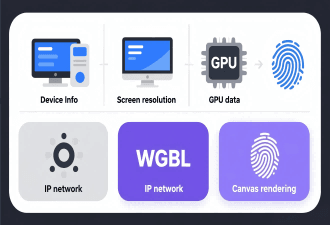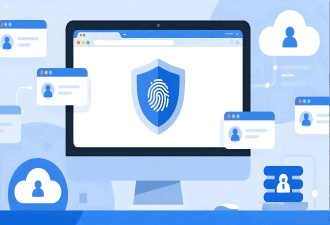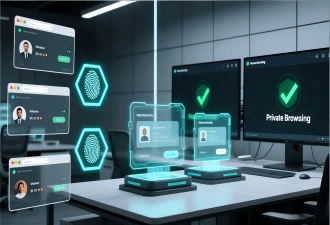LinkedIn Operations: A 7-Step Practical Guide from Zero to Stable Monetization (Includes B2B Lead Gen + MostLogin Anti-Detection Tips)


My Costly LinkedIn "Ineffective Operations" Mistakes, and the 6-Week Client Win That Followed

Back in 2022, when I first tried to generate leads on LinkedIn, I made a classic mistake – posting "industry insights" every day, covering everything from "marketing trends" to "lead generation tips." After 10 posts, the highest engagement I got was 3 likes, all from polite industry peers. That's when I realized LinkedIn was no longer a platform where "just posting content" would bring traffic. It had evolved into a high-value B2B client hub that demands "precise operations."
Later, I revamped my strategy using the "Seven-Step Method" you're about to read. Six weeks later, a SaaS client proactively messaged me: "I saw your post on 'How Small SaaS Companies Can Use LinkedIn to Boost SQL Conversion,' and I'd like to discuss a potential partnership." I've now consolidated this battle-tested method, refined from countless trials and errors, covering everything from positioning to monetization. Follow these practical steps, and you too can achieve similar results.
Step One: Find Your "Niche Battlefield" – My Positioning Formula That Attracts Ideal Clients
On LinkedIn, doing "a little bit of everything" is a huge no-no. My initial positioning as a "marketing consultant for businesses" got me nowhere. It wasn't until I narrowed it down to "helping small B2B SaaS companies with under $5M in annual revenue improve SQL conversion rates through LinkedIn content marketing" that I started attracting the right clients.
1. Define Your Niche: Answer 3 Key Questions
Avoid vague positioning. You must be clear: Who are you (e.g., "LinkedIn B2B Marketing Consultant")? Who do you serve (e.g., "B2B SaaS teams of under 50 people")? What specific problem do you solve (e.g., "low SQL conversion rates despite content investment")? I now explicitly state these three points in my LinkedIn bio, and ideal prospects add me daily.
2. Craft Your Ideal Customer Profile (ICP): Content Topics from Pain Points
No need for complex spreadsheets. Focus on these key pieces of information:
- Role: I primarily target Marketing Directors (CMOs) and CEOs of smaller companies, as they're most concerned about "traffic costs" and "lead quality."
- Industry / Size: I stick to the tech/SaaS sector, serving companies with 50-200 employees. These businesses usually have budgets and need efficient lead generation.
- Core Pain Points: For instance, "spent money on content, but no effective leads" or "don't know what to post to engage clients" – these pain points directly inform my content topics.
3. Build 3 Content Pillars: How I Engage My Audience
Don't jump around with your topics. Stick to three consistent content categories:
- Educational: E.g., "3 Steps to Generate B2B Leads with LinkedIn Short Posts," solving clients' "how-to" questions.
- Opinion/Insight: E.g., "Why Small SaaS Companies Should Avoid LinkedIn Long-Form Articles? I've Seen These 3 Pitfalls Too Often," prompting clients to think about "why."
- Social Proof: E.g., "Helped XX SaaS Company Boost SQL Conversion from 8% to 15% in 1 Month of LinkedIn Operations," building trust through results – these types of posts noticeably increase private message inquiries.
Step Two: Content That "Gets Seen & Converts" – My Battle-Tested High-Conversion Writing Strategies
Content isn't just about length. I've found that 200-word short posts can generate more leads than 2000-word articles, if you nail the algorithm and capture attention.
1. Content Formats: A Mix of Short & Long, My Weekly Schedule
- Short Posts (Feed Post): 3-5 times a week, 200-400 words, focusing on "Problem + Solution." For example, a recent post "Small SaaS Company LinkedIn Posts Getting No Engagement? Try This 'Pain Point + 1 Quick Tip' Structure," paired with a custom infographic, got over 200 interactions and 12 targeted connection requests that day.
- Long-Form Articles (Article): 1 per week, 1200-2000 words, used for authority building. E.g., "LinkedIn B2B Lead Generation: A Full Funnel from Content to Private Message Conversion." In these articles, I include specific case studies and data, making clients feel "this person truly knows their stuff."
2. Headline & Hook Tactics: My 40% Engagement Boosters
- "Result + Number" Headlines: E.g., "3 Core Actions to Triple Your LinkedIn Traffic in 6 Weeks" generated 40% more visibility than "LinkedIn Traffic Growth Guide"—this formula consistently performs best in my tests.
- No Fluff Openings: Throw your most valuable information into the first two lines. For an article on "LinkedIn Private Message Conversion," I'd start with, "Last week, I used this 3-step private message template to convert 5 prospects into paying clients." This encourages users to click "See more."
- Inject "Personal Perspective": Avoid sounding like a textbook. Share your own experiences. For instance, "I used to write short posts just stating 'what to do,' and engagement was low. Then I added, 'When I tried this last year, I hit XX pitfalls,' and engagement immediately jumped 20%"—that human touch makes clients want to read.
Step Three: Proactive Traffic Growth + Security – MostLogin Solved My Multi-Account Risk Issues
Just posting content isn't enough; you need to actively promote it and ensure account security. I once used a regular browser to manage 2 LinkedIn accounts and had one blocked within a week. MostLogin was the game-changer.
1. 3 Quick Traffic Growth Tips: My Daily 1-Hour Routine
- Optimize Profile: Always include keywords in your headline. Mine is "LinkedIn B2B Marketing Consultant | Helping Small SaaS Companies Boost SQL Conversion Rates," so Google searches for "LinkedIn B2B SaaS Marketing" find me. Pin your most valuable content (e.g., "LinkedIn Content Calendar Template") so new connections see it first.
- Engage in Industry Groups: Spend 30 minutes daily commenting in 5 relevant B2B SaaS groups. Don't just say "great post"; offer specific insights. If someone asks "how to write LinkedIn long-form articles," I might reply, "I've found that pre-seeding long-form content with a short post hook like 'XX insights in my latest article' triples the long-form article's views compared to posting directly." This encourages people to connect.
- Use "Lead Magnets" for Virality: Create something valuable, like a "LinkedIn B2B Content Topic Checklist." In a short post, say, "Comment + Share if you want this; I'll send it via DM." This boosts engagement and attracts targeted connections. I once gained 25 prospects in a day using this method.
2. Multi-Account Operations: The Core Role of MostLogin
If you're scaling (e.g., managing multi-language accounts, team collaboration), an anti-detection browser is crucial. When I managed 5 LinkedIn accounts in different languages for a multinational SaaS client, I used MostLogin. It creates independent browser environments (fingerprints) and proxy IPs for each account, making LinkedIn's risk control system perceive them as 5 different computers operating from various locations. This prevents account association and blocks. Moreover, 3 team members can manage different accounts with customized permissions, avoiding accidental errors – it's the most stable multi-account operation tool I've found.
Step Four: Convert Traffic to Cash – My 3 Models for Turning LinkedIn Leads into Revenue
Content and traffic ultimately serve monetization. I primarily use three methods, with clear paths from lead to close.
1. 3 Core Monetization Models: My Current Revenue Structure
- Direct Monetization: Consulting and paid long courses. Add a CTA to your profile (e.g., "Offering 1-on-1 LinkedIn Operations Consulting, click for service details") and pin course/consultation booking links. Clients often book directly after connecting.
- Productized Services: Selling online courses and templates, such as "LinkedIn B2B Content Creation Course" or "Content Calendar Template." A simple "Link in bio for more" in your content leads to direct sales, no active selling required.
- B2B Lead Conversion: This is my main revenue driver. The path is "Content Engagement → Client Downloads Lead Magnet (e.g., whitepaper) → Marked as Lead in HubSpot → Follow-up → Close." For example, if a client downloads my "Small SaaS Company LinkedIn Lead Generation Guide," I'll send a thank-you DM, then schedule a 15-minute call to nurture the lead.
2. Private Message Conversion Template: Don't Pitch Immediately
I've learned that directly pitching "buy my service" often leads to being ignored. A 3-step approach works much better:
- First Contact: Compliment, then connect. E.g., "Hi [Name], I read your post on 'SaaS Company LinkedIn Lead Generation Challenges' and really resonated with it. I've been there too. Glad to connect!"
- Provide Value: Offer targeted help. E.g., "I noticed your team is working on LinkedIn long-form articles. I've compiled some 'Long-Form Headline Optimization Tips'—would you like me to send them over for your reference?"
- Suggest Action: Be specific, offer options. E.g., "Since you downloaded the content template, I have availability tomorrow at 2 PM or the day after at 10 AM to discuss how to apply it to your client growth. It'll just be 15 minutes, which time works best for you?"—this increases the likelihood of acceptance.
Step Five: Efficient Operations – My Team's Tools & Processes Save 30% of Time
No need for complex processes. Simple routines and the right tools are enough. Here's my team's weekly flow:
1. Weekly Rhythm: 3 Core Tasks
- Monday: Spend 2 hours drafting 80% of the week's content (e.g., frameworks for 3 short posts, 1 long-form article) to avoid last-minute rushes.
- Wednesday: Schedule content. Use Notion to list content, publish times, and visuals. Clearly assign who's responsible for posting and who for engagement.
- Daily: Spend 1 hour following up with prospects (responding to DMs, connecting with new people), and 30 minutes engaging in groups – consistency is key, not excessive time.
2. Essential Tools: I've Tested Dozens, Kept Only These
- Multi-Account / Anti-Detection: MostLogin Anti-Detection Browser, for stable, block-free operations.
- Content Collaboration: Notion, for drafting, scheduling, and real-time team edits.
- Lead Management: HubSpot, automatically pulls leads after they download a lead magnet, tags them as MQL/SQL, streamlining sales follow-up.
Step Six: Optimize with Data – My Weekly Metrics for Continuous Improvement
Don't guess; let data guide your changes. I monitor two types of metrics weekly.
1. Key KPIs: Short-Term vs. Long-Term
- Short-Term: Impressions and Engagement Rate – if impressions are low, optimize headlines and posting times; if engagement is low, adjust content direction (e.g., more educational content).
- Long-Term: New Leads and Conversion Rate (Lead to MQL to SQL to Close) – For example, last week I generated 120 new leads, 30 became MQLs, a 25% conversion rate, 5% higher than the previous week, mainly because I swapped the lead magnet to a "LinkedIn Private Message Conversion Template."
2. A/B Testing: Test One Variable Weekly
No need for complexity. Change one thing a week to test. For example, last week I tested "posting time": previously posting at 3 PM, average impressions were 3000; shifting to 9 AM, impressions rose to 4500 – so I'll stick to morning posts. This week, I'm testing "headline style" to see which performs better: "Number + Result" vs. "Problem + Solution," and next week I'll use the better-performing one.
Step Seven: Take Action – Don't Wait for "Perfection," Just Get Started
LinkedIn operations are not an overnight success; it took me three months to go from zero to stable monetization. The key is to start and then optimize.
Here are 2 things you can do right now:
- Refine your positioning: Update your LinkedIn headline and bio using the "Who you are + Who you serve + What problem you solve" formula.
- Pick one content pillar (e.g., educational) and write a 200-word short post about a core pain point your clients face – for example, "Small SaaS companies getting no engagement on LinkedIn? Try this 1 quick tip." If you're looking to scale your operations (e.g., multi-account, team collaboration), consider trying MostLogin first. Don't fall into the account blocking traps I did – security is the foundation of scale.


